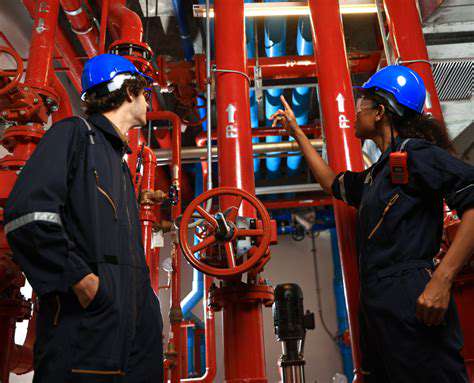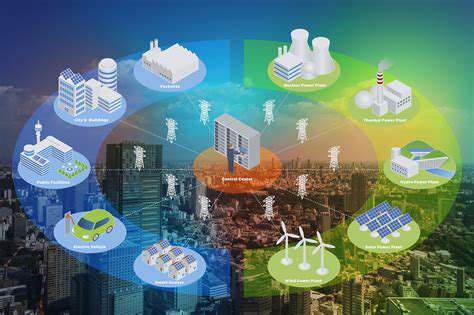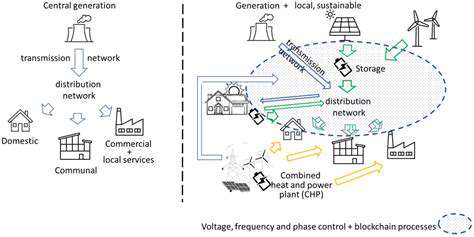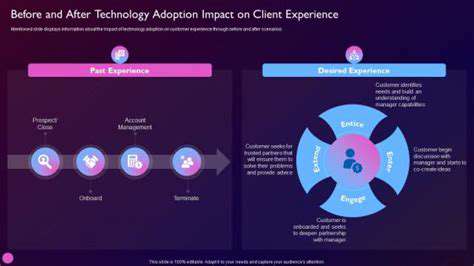Offshore Wind: Tapping into Ocean Power
Technological Advancements Driving Offshore Wind Growth
Technological Advancements in Turbine Design
Significant advancements in turbine design are a key driver of offshore wind growth. Modern turbines are significantly larger and more powerful than their predecessors, enabling them to capture more wind energy and operate more efficiently in challenging offshore conditions. This increase in capacity factor, paired with improved materials science, leads to lower operating costs and higher energy yields. The evolution of designs has also focused on reducing the environmental impact of these massive structures, from minimizing noise pollution to adapting to varying weather patterns.
Innovations in blade design, incorporating advanced materials and aerodynamic profiles, are crucial. These improvements enhance power output and reduce maintenance needs, translating to substantial cost savings for operators over the turbine's lifetime. The use of advanced sensors and control systems also plays a vital role in optimizing performance and ensuring safety.
Improved Materials and Manufacturing Techniques
The use of advanced materials, such as lighter yet stronger composites, is revolutionizing the construction of offshore wind turbines. These advancements translate to reduced weight, enabling larger turbines and reducing the overall cost of construction. Specialized manufacturing techniques are also playing a key role, optimizing production processes and increasing the reliability and durability of components.
The development of more robust and corrosion-resistant materials for offshore environments is critical. Harsh conditions, including saltwater exposure and extreme weather, require these specialized materials to ensure the longevity and performance of the turbines. Efficient and cost-effective manufacturing methods further contribute to the overall cost-effectiveness of offshore wind projects.
Enhanced Subsea Infrastructure
Technological advancements in subsea infrastructure, including foundations and cables, are essential for the successful deployment of offshore wind farms. The development of innovative foundation designs, tailored for different seabed conditions, is crucial for ensuring the stability and longevity of the turbines in challenging offshore environments. These designs also significantly reduce the environmental impact of the foundations. The design of these foundations is complex and requires advanced modeling and analysis to ensure their structural integrity.
Advanced Control and Monitoring Systems
Sophisticated control and monitoring systems are essential for optimizing the performance and safety of offshore wind turbines. Real-time data collection and analysis from sensors allow operators to fine-tune turbine operations, maximizing energy capture and minimizing downtime. These systems also facilitate remote monitoring and maintenance, reducing the need for on-site personnel and further lowering operational costs.
Cost Reduction Strategies
Technological advancements are driving down the cost of offshore wind energy. Improvements in turbine design, manufacturing techniques, and installation methods are all contributing to this reduction. Economies of scale in manufacturing and installation are further lowering the cost per megawatt of generated electricity. The focus on minimizing material costs and streamlining project timelines is also a key component of this cost-reduction strategy.
Improved Installation Methods
The development of more efficient and cost-effective installation methods is a critical factor in the growth of offshore wind. Larger vessels, specialized cranes, and innovative installation techniques are reducing the time and cost associated with deploying these large-scale projects. These advancements in installation methods significantly accelerate project timelines, a key driver of the cost-effectiveness and efficiency of offshore wind farms.
Environmental Considerations and Mitigation
Growing awareness of the environmental impact of offshore wind energy has led to the development of technologies to minimize environmental concerns. Noise reduction techniques, improved bird and marine life mitigation strategies, and careful site selection are key components of this approach. The focus is on minimizing the impact on marine ecosystems and ensuring the sustainability of these projects. Careful consideration of environmental factors is crucial for long-term acceptance and support of offshore wind farms.
The Economic Benefits of Investing in Offshore Wind
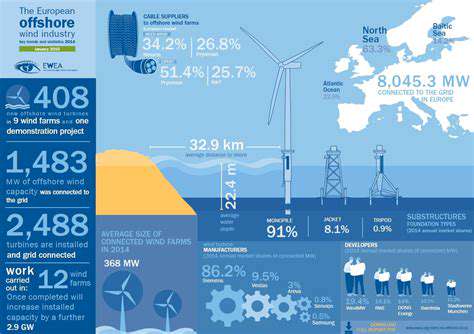
Investment Fuels Economic Growth
Investing, in its various forms, plays a crucial role in driving economic growth. By allocating capital to productive ventures, investors provide the resources needed for businesses to expand, innovate, and create jobs. This, in turn, boosts overall economic activity and prosperity. Investing in infrastructure, like roads and bridges, also enhances productivity and facilitates trade, contributing significantly to economic development.
The ripple effect of investment is profound. Businesses that receive investment are better positioned to compete in the market, leading to increased efficiency and innovation. This translates to lower prices for consumers and a higher standard of living for the population. This positive feedback loop between investment and economic growth is a fundamental principle of modern economics.
Increased Productivity and Efficiency
Investments in technology and equipment often lead to enhanced productivity and efficiency within businesses. Modernizing infrastructure and adopting innovative practices can significantly streamline operations, reduce waste, and increase output. This translates to higher profits for businesses and improved quality of goods and services for consumers.
Furthermore, investment in human capital, such as education and training programs, empowers individuals to acquire valuable skills and knowledge, thus increasing their productivity and earning potential. This, in turn, boosts the overall economic output of the region or nation.
Job Creation and Employment Opportunities
Investments in new businesses and expanding existing ones directly contribute to job creation. New ventures require personnel for various roles, from management and marketing to production and customer service. As businesses grow, they often need to hire more employees, leading to a surge in employment opportunities.
This increase in employment not only improves the lives of individuals but also stimulates consumer spending, which further strengthens the economy. A thriving job market fosters economic stability and reduces poverty rates.
Capital Accumulation and Wealth Creation
Investments, whether in stocks, bonds, real estate, or other assets, contribute to the accumulation of capital. This accumulation of capital provides resources for future investments and economic growth. This is a fundamental principle of wealth creation, where investments are used to generate returns and accumulate wealth over time.
This process of capital accumulation fosters a more robust and resilient economy, with a higher level of investment opportunities for the future.
Stimulation of Innovation and Entrepreneurship
Investment provides the crucial capital needed for entrepreneurs to pursue innovative ideas and launch new ventures. These new ventures often introduce groundbreaking products, services, and processes that can transform industries and create entirely new markets. This is how innovation is fostered and new technologies are developed.
Investing in research and development also plays a critical role in driving technological advancement and fostering a more dynamic and innovative economy.
Attracting Foreign Investment and Global Integration
A strong and stable investment climate attracts foreign investment, which is crucial for economic growth, particularly in developing countries. Foreign investment often brings with it new technologies, expertise, and capital, which can significantly boost local industries and create employment opportunities.
Foreign investment promotes global integration and creates opportunities for international trade and economic cooperation. This integration can lead to greater specialization and efficiency in production, ultimately benefiting all participating economies.
Improved Infrastructure and Public Services
Investments in infrastructure, such as transportation networks, communication systems, and utilities, enhance the quality of life for citizens and improve the overall efficiency of the economy. Well-maintained infrastructure facilitates trade, reduces transportation costs, and improves access to vital services.
Improved infrastructure also attracts further investment, creating a positive feedback loop that strengthens the economy's long-term prospects. This is crucial for a modern, functioning society.

